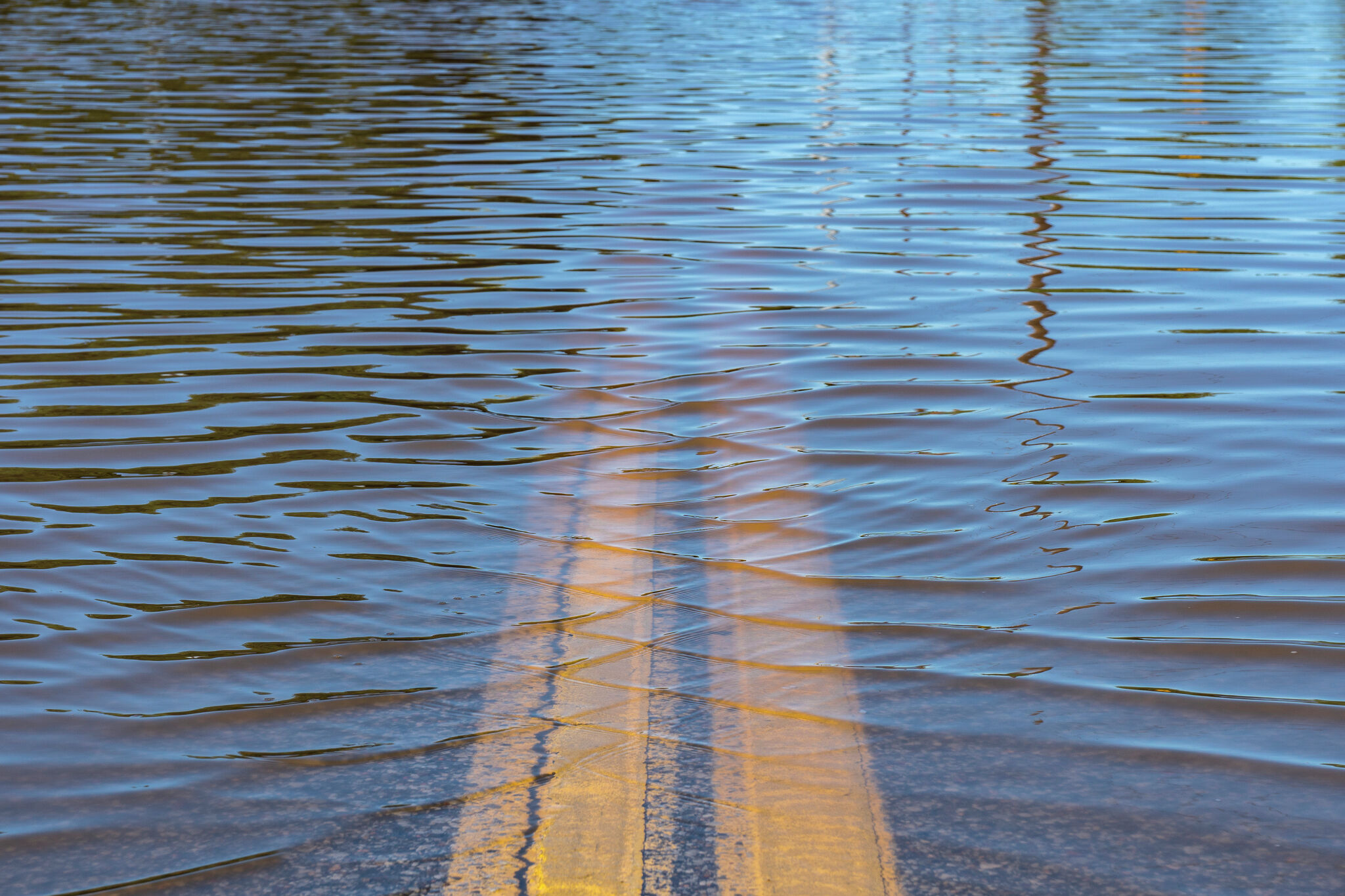NWS Flood Warning: Protecting Yourself And Your Property

Table of Contents
Understanding NWS Flood Warnings and Alerts
Knowing the difference between various NWS alerts is the first step in effective flood preparation. Misinterpreting these alerts can have serious consequences.
Different Levels of Flood Warnings
The National Weather Service uses three primary alert levels to communicate flood risk:
-
Flood Watch: This indicates that conditions are favorable for flooding. Be prepared to take action if flooding occurs. Monitor weather reports closely and be ready to move valuables to higher ground.
-
Flood Warning: Flooding is occurring or is imminent. Take immediate action to protect yourself and your property. This may include evacuating if instructed by authorities.
-
Flood Advisory: Flooding is possible in specific areas. Be aware of the potential for flooding and take necessary precautions. Stay updated on weather reports and be ready to act if conditions worsen.
Always check the official NWS website and your local news for the most up-to-date information. Many weather apps also provide real-time alerts and forecasts.
Interpreting Flood Information
Understanding the predicted flood depth and its potential impact on your area is vital.
- Flood Maps and Forecasts: Familiarize yourself with flood maps for your area, identifying areas prone to flooding. Pay attention to predicted flood depths; even a few inches of water can cause significant damage.
- Flood Depth and Consequences: A few inches of floodwater can damage your car and belongings. Several feet of water can compromise your house's structural integrity and cause severe property damage.
- Personalized Alerts: Utilize the NWS website or app to set up personalized alerts for your specific location. This will ensure you receive timely warnings about potential flooding in your area.
Protecting Your Property Before a Flood
Proactive measures significantly reduce the impact of a flood. Implementing flood mitigation strategies and creating a comprehensive plan is essential.
Floodproofing Your Home
Investing in floodproofing measures can save you significant expenses in the long run.
- Elevate Electrical Systems: Moving electrical outlets and panels to higher locations minimizes the risk of electrical shock and short circuits during a flood.
- Waterproof Barriers: Install waterproof barriers around doors, windows, and basement walls to prevent water intrusion.
- Seal Cracks in Foundations: Seal any cracks or gaps in your foundation to prevent water from seeping into your basement or crawlspace.
- Flood Vents: Install flood vents to allow water to flow through your structure rather than building pressure against walls. Consider the cost-effectiveness of each measure against potential damage.
Creating a Flood Emergency Plan
A well-defined plan is crucial for a safe and efficient response during a flood.
- Safe Evacuation Routes: Identify multiple safe evacuation routes and ensure everyone in your household knows them.
- Emergency Kit: Prepare a comprehensive emergency kit including essential supplies like water, food, medications, flashlights, and first-aid supplies.
- Meeting Place: Designate a safe meeting place outside your home in case you are separated during the evacuation.
- Pet Arrangements: Have a plan for your pets, including temporary shelter and transportation. Regularly review and practice your flood emergency plan. Communication is key – establish a communication strategy with family members during a flood.
Securing Valuables
Protecting important documents and irreplaceable possessions is essential.
- Elevate Valuables: Move important documents, electronics, and other valuables to higher levels in your home.
- Waterproof Containers: Store important documents in waterproof containers to prevent damage.
- Photograph Possessions: Take photos or videos of your valuable possessions for insurance purposes.
- Off-site Storage: Consider storing crucial documents and irreplaceable items in a safe, off-site location. Keep your insurance documentation readily available and up-to-date.
Actions to Take During a Flood Warning
Immediate action is critical when a flood warning is issued. Prioritize safety and follow official instructions.
Evacuating Your Home
Evacuate immediately if instructed by authorities.
- Follow Evacuation Orders: Obey all official evacuation orders promptly.
- Turn Off Utilities: Turn off gas, electricity, and water before evacuating to prevent further damage and hazards.
- Essential Items: Bring your emergency kit, important documents, and medications.
- Secure Your Home: Lock doors and windows to prevent looting. Never drive through flooded areas; the depth of water can be deceiving and currents are strong. Evacuation procedures may differ slightly based on your housing type (e.g., apartment, single-family home).
Staying Safe During a Flood
Your safety is paramount during a flood. Avoid contact with floodwaters and be aware of potential hazards.
- Avoid Floodwaters: Floodwaters may contain dangerous contaminants and debris.
- Downed Power Lines: Stay away from downed power lines, which pose a significant electrocution risk.
- Potential Hazards: Be aware of potential hazards such as debris, snakes, and bacteria in floodwaters. Appropriate safety gear like boots and gloves should be worn. If trapped in a vehicle during a flood, try to escape safely and seek higher ground.
After the Flood: Recovery and Resources
Post-flood recovery involves assessing damage, cleaning up safely, and accessing available resources.
Assessing Damage and Reporting
Documenting the damage is crucial for insurance claims and assistance from authorities.
- Document Damage: Take photos and videos of the damage to your property.
- Report to Authorities: Report the damage to your insurance company and local authorities.
- FEMA: Contact FEMA (Federal Emergency Management Agency) if applicable for federal assistance.
Cleaning Up After a Flood
Cleaning up after a flood requires caution and safety measures.
- Protective Gear: Wear protective gear including rubber boots, gloves, and eye protection.
- Cleaning Supplies: Use appropriate cleaning supplies to disinfect affected areas.
- Dispose of Items: Dispose of contaminated items properly, avoiding contact with the water.
- Mold Prevention: Take steps to prevent mold growth by drying affected areas thoroughly. Consider professional flood cleanup services for extensive damage.
Conclusion
Staying informed about NWS flood warnings and taking proactive steps to protect your property and yourself is vital. By understanding the different warning levels, preparing a comprehensive emergency plan, and knowing what actions to take before, during, and after a flood, you can significantly minimize the risks associated with flooding. Remember to check the NWS website and your local news regularly for updates on flood warnings and advisories, and always prioritize your safety. Don't wait for an NWS flood warning; prepare for potential flooding now to safeguard your home and family. Develop your flood preparedness plan today.

Featured Posts
-
 Zize Spectacle Transformiste Marseillais A Graveson Le 4 Avril
May 25, 2025
Zize Spectacle Transformiste Marseillais A Graveson Le 4 Avril
May 25, 2025 -
 Italian Open Alcaraz And Sabalenkas Winning Beginnings
May 25, 2025
Italian Open Alcaraz And Sabalenkas Winning Beginnings
May 25, 2025 -
 Net Asset Value Nav Of Amundi Msci World Ii Ucits Etf Dist Key Considerations
May 25, 2025
Net Asset Value Nav Of Amundi Msci World Ii Ucits Etf Dist Key Considerations
May 25, 2025 -
 Roc Agel El Refugio De Charlene En La Propiedad Grimaldi
May 25, 2025
Roc Agel El Refugio De Charlene En La Propiedad Grimaldi
May 25, 2025 -
 Amsterdam Stock Exchange Falls 2 On Trumps New Tariffs
May 25, 2025
Amsterdam Stock Exchange Falls 2 On Trumps New Tariffs
May 25, 2025
